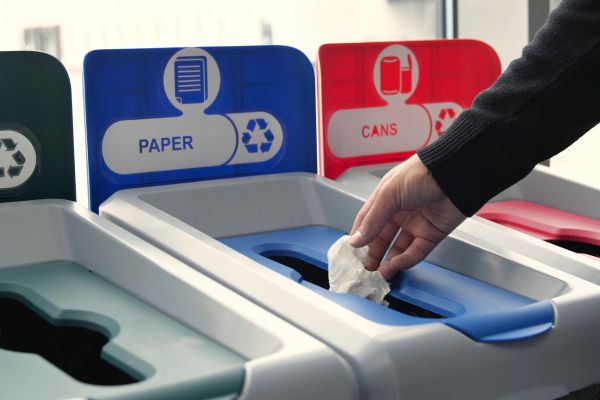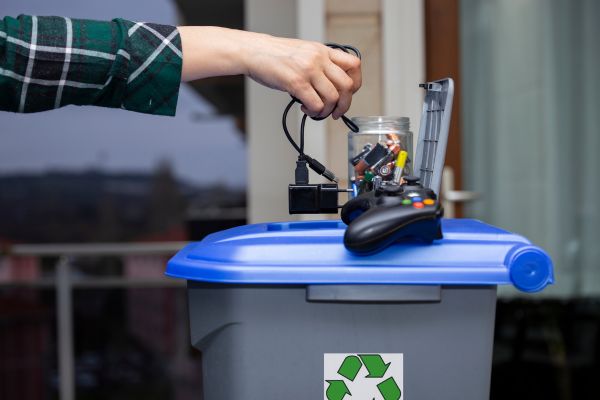In the contemporary business landscape, fostering sustainability is not only an ethical imperative but also a strategic move toward a greener and more responsible future. The office environment, with its daily operations, can significantly contribute to waste generation. This article delves into a comprehensive guide on how organizations can effectively reducing waste in the workplace, emphasizing actionable, sustainable practices, employee engagement, and the implementation of efficient waste management strategies.
Audit and Assess Current Practices:
Before implementing any changes, it’s essential to conduct a thorough audit of your current office practices. Assess the types and amounts of waste generated, from paper and packaging to electronic waste. Understanding the specific waste streams will help in tailoring targeted strategies for reduction.
If you are interested in effectively reviewing your waste and recycling practices in relation to your products or manufacturing processes, there are many ways to assess your current practices, such as analyzing materials used or products purchased, optimizing production processes, assessing packaging options, and collaborating with your suppliers. This article will focus on the office environment for now, and a future article will look into ways you can promote environmentally sustainable strategies in your business.
Here are some great ways to help you assess your current workplace waste practices:
- Conduct a Waste Audit: Start by assessing the types and quantities of waste generated in your office. Sort through trash and recycling bins to identify common items and estimate their volume. This will help you understand what materials are being discarded and where opportunities for improvement lie.
- Analyze Recycling Streams: Evaluate the effectiveness of your office’s recycling program by examining the contents of recycling bins. Look for contamination, such as non-recyclable items mixed in with recyclables, and assess whether proper sorting guidelines are being followed.
- Undertake Employee Surveys: Undertaking an employee survey is a valuable tool for gaining insights into how staff members interact with waste management practices in the workplace. By asking targeted questions about recycling habits, adherence to waste disposal rules, and overall attitudes toward sustainability, employers can better understand employee behaviors and perceptions.
- Review General Office Procurement Practices: Assess the types of products and materials purchased for office use. To reduce waste generation, consider alternatives to single-use items, such as reusable office supplies or products with minimal packaging.
- Evaluate Waste Management Contracts: Review contracts with waste management companies to ensure they align with your office’s waste reduction goals. Consider options for diverting waste from landfills, such as composting organic materials or partnering with recycling facilities for specialized items.
- Set Targets and Track Progress: Establish measurable goals for waste reduction and recycling improvement in your office. Monitor waste generation rates, recycling rates, and contamination levels to track progress over time and adjust strategies as needed to achieve desired outcomes.
By implementing these actionable pointers, offices can effectively audit and assess their current waste and recycling practices to identify opportunities for improvement and make meaningful strides toward sustainability.
Implementation: Reducing Waste in the Workplace
Once you have the information and goals established, you can start implementing changes. Slowly implementing waste reduction strategies in the workplace is crucial for several reasons. Firstly, gradual implementation allows for thorough planning and assessment against goals. Secondly, a phased approach allows employees to adapt to changes gradually, reducing resistance and facilitating buy-in to new initiatives. This approach also provides opportunities for education and training, empowering staff to actively participate in waste reduction efforts and fostering a culture of sustainability within the organization.
By taking a measured and systematic approach to waste reduction, businesses can maximize the success and impact of their initiatives while minimizing disruptions to daily operations.
Here are some great ideas to get started:
Ways to Reduce Waste in The Office
- Encourage Paperless Operations: Transitioning to a paperless office is a fundamental step in reducing waste. Implement digital tools and technologies for document sharing, collaboration, and storage. Encourage employees to use electronic communication and documentation methods, reducing their reliance on paper. This not only saves resources but also streamlines workflows.
- Promote Responsible Printing: For unavoidable printing needs, promote responsible printing practices. Encourage double-sided printing, the use of recycled paper, and proper disposal of ink cartridges. Implement print management systems that monitor and control printing, minimizing unnecessary use.
- Implement a Reusable Office Supply Program: Create a system for reusing office supplies such as folders, binders, and desk accessories. Establish a designated area where employees can deposit gently used items for others to take. Or alternatively, set up a shared stationary area where everyone can locate the tools they need without having a stapler on every desk. This not only reduces waste but also promotes a sense of community within the workplace.
Making Changes in the Kitchen
- Reduce Single-Use Items: Single-use items contribute significantly to office waste. Replace disposable cups, plates, and cutlery with reusable alternatives. Encourage employees to bring their own reusable water bottles and provide water stations to reduce the need for plastic bottles. Consider implementing a “zero-waste” policy for office events and gatherings.
- Optimize Food Waste Management: Addressing food waste is crucial for a sustainable office. Encourage responsible consumption, mindful ordering, and consider implementing a composting program for food scraps. You can even partner with local food banks or charities to donate excess edible food.

Upgrading Your Recycling System
- Implement a Robust Recycling Program: Make sure your recycling program covers paper, plastic, glass, and metals. Clearly label recycling bins and place them strategically throughout the office. Educate employees on what can be recycled and the proper disposal methods. Partner with local recycling facilities to ensure that the collected materials are processed responsibly.
- Implement an E-waste Recycling Program: E-waste is one of the fasted growing waste streams, and office environments are a large source of this type of waste. Review your company policies on disposing of electronic items at the end of their useful life. Try to keep items in use as long as possible by looking into repair options and showing employees how to keep them clean and maintained. Consider donating working equipment, paying a company to refurbish it or offering it to employees for their home offices. Set up e-waste collection points and encourage employees to bring in their personal e-waste too.
- Establish a Specialist Recycling Station: My favorite way to reduce waste in the workplace is to set up a specialist recycling station. Specialist programs can recycle many different items, from pens and batteries to safety gear and even binders and presentation materials. You can find many of these programs via Terracycle.

Using Your Business Purchasing Power
- Green Procurement Practices: Anther way to help with reducing waste in the workplace is to adopt green procurement practices. You can do this by sourcing office supplies, furniture, and equipment from sustainable and eco-friendly suppliers. Prioritize products with minimal packaging, recycled content, and a commitment to environmental responsibility. This not only reduces waste but also supports eco-conscious businesses.
Engaging With Your Employees
- Employee Education and Engagement: An informed and engaged workforce is instrumental in waste reduction. Conduct regular training sessions on sustainable practices, waste sorting, and the environmental impact of office activities. Foster a culture of responsibility, encouraging employees to take ownership of waste reduction initiatives.
- Celebrate Achievements: Recognize and celebrate milestones and achievements in waste reduction. Acknowledge and reward employees for their contributions to a greener office environment. This positive reinforcement helps maintain enthusiasm and commitment to sustainability goals.
Keeping Things On Track
- Monitor and Measure Progress: Regularly monitor and measure the effectiveness of waste reduction initiatives. Analyze data on waste generation, recycling rates, and employee participation. Use the insights gained to continuously refine and improve sustainability strategies.
Reducing waste in the office is a worthy endeavor that can be achieved through a combination of planning, employee engagement, and a commitment to sustainable practices. By conducting simple assessments, setting targets, implementing initiatives, and fostering a culture of environmental responsibility, organizations can make significant strides toward reducing waste in the workplace which their employees and customers will appreciate too.














